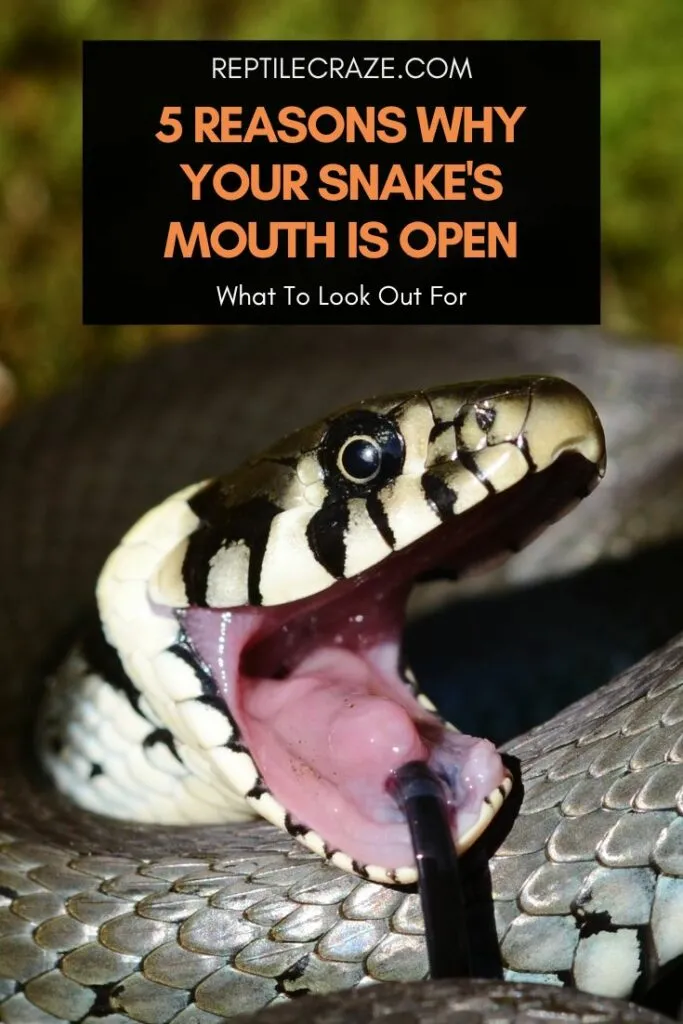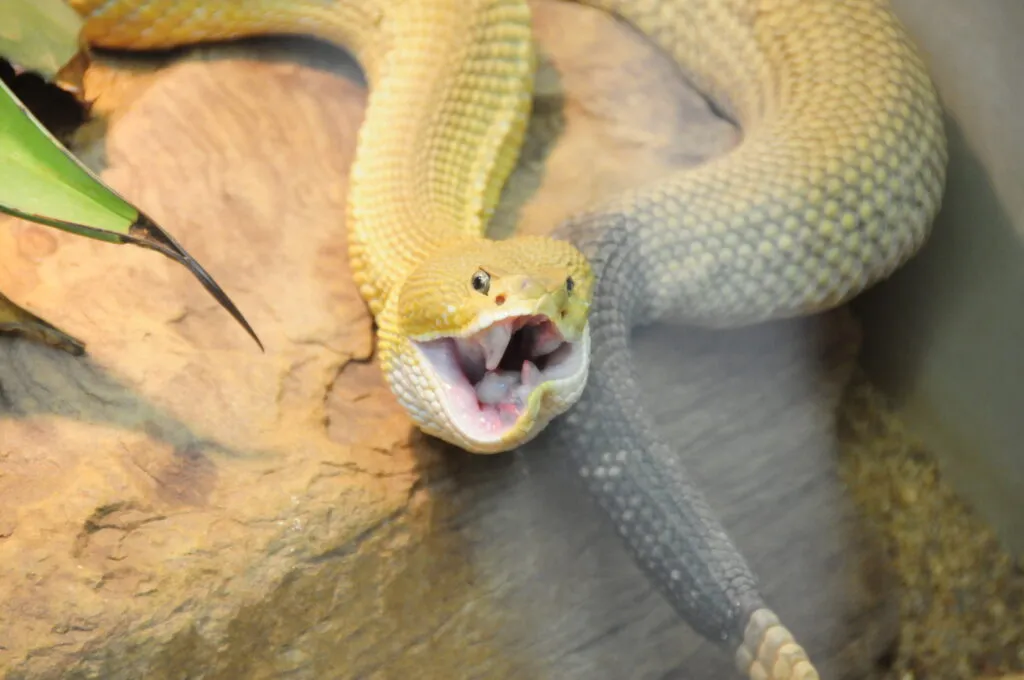
Snakes are renowned for opening their mouths wide to eat – with some species able to open to a 140-degree angle! But have you noticed that your pet snake opens and closes its mouth or seems to be yawning even when not feeding? Are you worried about it?
Your snake’s mouth could be open when the snake is warming up for feeding, trying to smell the air, or starting to shed its skin. However, it can also be a sign that the environment is too hot, the snake feels threatened, or it is sick.
So, how do you know if your snake’s open mouth is a cause for concern? Keep reading, and we’ll tell you when it’s normal, what it means, and when you should be worried.
Why Your Snake’s Mouth Is Open
Here are five possible reasons why your snake’s mouth is open.
1. Your snake is warming up for a feed or realigning afterward
While snakes can’t ‘unhinge’ their jaws, despite popular opinion, the ligaments that keep the two separate jaw bones can stretch in a far greater range than most other animals.
If your snake’s mouth is open, it might be stretching out those ligaments.
Remember that snakes are immobile most of the time. Keeping still is one of their superpowers and what helps them hunt without expending a lot of energy in the wild.
But this can lead to some stiffness, just like it can with human muscles if we sit still too long.
Your snake might be either working out that stiffness to be ready for its next meal or getting those jaws ready to rest once again after a meal.
If your snake is opening its jaws but hasn’t eaten in a while, take the yawning motion as a hint that your pet is hungry!

2. It is trying to take in more scents
Snakes also open their mouths to take in more scents. Though their nostrils do work, they also have scent receptors on the top of their mouths (not on their tongues, despite the myth) called vomeronasal organs.
This sort of smelling usually includes tongue flicking, and their forked tongues help them know from which direction the scent is coming.
Rattlesnakes have been observed to gape and flick their tongues to detect chemical signals from other snakes.
The working theory is that snakes depend on their exterior noses for basic smelling, but if something is interesting, they delve deeper into it by engaging the vomeronasal organ by opening their mouths and flicking their tongues.
3. It’s feeling defensive
Snakes open their mouths and hiss if they’re feeling threatened. The mouth opening can be a means to appear bigger, since size very much matters in the wild.
If your snake has taken the telltale defensive ‘S’ position or otherwise looks ready to strike, make sure you give it space.
Tip: If your snake is aggressive, read our article on that here. It will help you calm your snake down. You should also read our article on stress signs in snakes here.
4. Your snake is going to shed
Typically, ecdysis (the shedding of scales) begins at the jawline, peeling back over the rest of the body. The skin becomes very dry as it dies and can prevent your snake from opening its jaws to their full extent.
To combat this, a snake may force its mouth open to encourage the dead skin to peel back and free its face.
In this video, you can see a corn snake stretching her mouth to help release dried skin, while rubbing her nose on items in her
If a snake is struggling to shed properly, it can become hard for them to breathe and eat, and its vision can be impaired until the skin breaks away from the face. This can make them feel stressed and defensive.
If you do notice your snake struggling to complete ecdysis, you can help it along by soaking the body in lukewarm water (make sure it can breathe!).
If that doesn’t work or your snake won’t let you get close enough to touch it, it’s time to visit the vet.
If you don’t live near a reptile vet, you should book an online vet. You can do so at Vetster. They have great, affordable service and offer appointments 24/7. Check out Vetster here!
Tip: Is your snake shedding right now? Our articles can help you with that situation:
- Can you handle a snake before or during shedding?
- Can you handle a snake right after shedding?
- Can you feed a snake during shedding?
- Why your snake is shedding so often
- Eye problems in snakes and how to help
5. Your snake is sick
If it seems your snake is breathing through its mouth constantly, not just inspecting smells, there’s a problem. Snakes are not meant to be mouth breathers.
They resort to this behavior when their nostrils are obstructed or unable to provide them with enough air.
If you notice mucus around your pet’s nose and mouth or wheezing with the mouth open, it’s time to check in with the vet. Your snake could have a respiratory infection or mouth rot (infectious stomatitis).
The vet may run tests on the snake’s blood or mucus to determine the cause of the illness. Oral and injectable antibiotics are often given to treat infections in snakes.
Be aware that some species of snake only have one lung, such as the black mamba and even common garter snakes, meaning that any infection in it needs to be treated rapidly.
Boas and pythons do not fall into this category, as those species have two lungs.
Tip: If you fear that your snake might be sick, here are a couple of our articles we recommend reading:
- 10 signs your snake is dying + how to help
- Is your snake underweight?
- 7 Reasons why your snake isn’t active
- The ultimate snake poop guide
Keep an Eye On It
There are many reasons your snake could be opening its mouth. It could be smelling the environment, getting ready to slough off scales, preparing to eat or go back to resting after eating, or it could be sick.
If your snake is leaving its mouth open for extended periods and seems to rely on this for breathing, it’s time to be concerned and head to your trusted vet.
- Enchi Ball Python: A Unique and Stunning Morph of Python regius - March 27, 2025
- Emerald Tree Monitor: The Enigmatic Green Guardian of the Rainforest - March 26, 2025
- The Egyptian Cobra (Naja haje): A Fascinating Serpent - March 25, 2025
